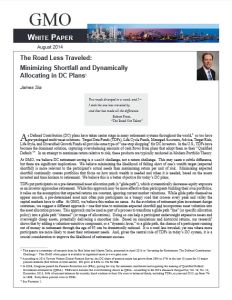Join getAbstract to access the summary!

Join getAbstract to access the summary!
James Sia
The Road Less Traveled
Minimizing Shortfall and Dynamically Allocating in DC Plans
GMO, 2014
What's inside?
Dynamic allocation in defined contribution plans can help ensure you don’t run out of money in retirement.
Recommendation
In the United States, defined benefit pension plans are largely fading from view as defined contribution (DC) plans take their place. Instead of looking forward to a regular pension, more and more workers will have to rely on nest eggs they have accumulated – since DC plans rely on participants to take an active role in saving for their future – and invested. Target date funds are one popular solution, but investment expert James Sia says the methodology their managers use for asset allocation may leave participants with a shortfall in retirement. He outlines a better way for plan sponsors to handle DC schemes that will build wealth for retirees. getAbstract recommends this instructive paper to future retirees, plan sponsors and those who run corporate retirement schemes.
Summary
About the Author
James Sia is head of defined contribution efforts for the global client relations team at GMO, a global investment management firm.

















Comment on this summary